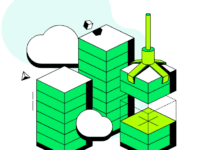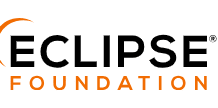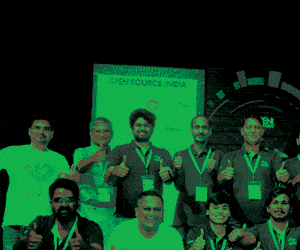The AWS Well-Architected Review (WAR) is a systematic approach to evaluating systems on the AWS cloud against a set of architectural best practices. This review is designed to provide developers with a clear understanding of their applications’ cloud performance, identifying areas of improvement to ensure the highest quality deliverables. Let’s see how it works.
Within the dynamic domain of cloud computing, where agility and scalability are of the utmost importance, it is critical to prioritise quality and efficiency for cloud applications. The implementation of AWS (Amazon Web Services) Well-Architected Review (WAR) has provided organisations with a systematic framework through which they can assess and enhance their cloud architectures. In addition to improving the calibre of cloud application development, these evaluations are instrumental in maximising the cost-effectiveness of cloud deployment. They play a crucial role throughout the software development life cycle (SDLC) such as:
- Planning and analysis: During the initial stages of the SDLC, the review provides guidance on making informed decisions about architecture design, helping to plan efficient and scalable systems.
- Design and development: The review’s best practices guide developers in designing robust, efficient, and secure applications. This helps in making design choices that ensure high performance and cost-efficiency.
- Testing: The review aids in identifying potential issues and vulnerabilities in the system, enabling developers to address them during the testing phase.
- Deployment and maintenance: Post-deployment, the review serves as a continuous improvement tool, helping to identify areas for refinement and optimisation.
Table 1: Features of AWS WAR and their benefits
| Feature | Description | Benefits |
| Comprehensive framework | AWS Well-Architected Reviews provide a structured framework consisting of six pillars: operational excellence, security, reliability, performance efficiency, cost optimisation and sustainability. | This helps in systematically evaluating and optimising cloud architectures to meet the requirements of modern software development, ensuring that applications are built with best practices and adhere to industry standards. |
| Guidance and best practices | Offers guidance and best practices for designing, deploying, and optimising cloud-based architectures. | Assists in making informed decisions during cloud-native migration, modernisation, and transformation initiatives, enabling organisations to leverage proven strategies and approaches for building scalable and resilient cloud applications. |
| Identifying design flaws | Helps in identifying design flaws and architectural bottlenecks early in the development life cycle. | Facilitates proactive identification and resolution of potential issues, minimising the risk of costly rework and ensuring that cloud-native applications are designed to meet performance, security, and reliability requirements. |
| Continuous improvement | Emphasises the importance of continuous improvement and iterative refinement of cloud architectures. | Encourages organisations to adopt a culture of continuous improvement, fostering innovation and agility in software development processes, and enabling teams to evolve and adapt their cloud architectures over time. |
| Cost optimisation | Provides strategies for optimising costs without sacrificing performance or reliability. | Helps in maximising cost efficiency in cloud-native migration and modernisation projects by identifying opportunities for cost optimisation, right-sizing resources, and leveraging cost-effective architectural patterns and AWS services. |
| Security best practices | Addresses security best practices, including data protection, identity and access management, and compliance. | Ensures that cloud-native applications are built with robust security controls and measures in place, protecting sensitive data and mitigating risks associated with cyber threats and compliance requirements. |
| Reliability and resilience | Focuses on ensuring that systems can recover from failures and meet business requirements for availability. | Helps in designing cloud-native applications with built-in fault tolerance, disaster recovery, and high availability capabilities, ensuring continuous operation and minimising downtime in the event of failures or disruptions. |
| Performance optimisation | Aims to optimise resource utilisation and maximise performance to meet business requirements. | Assists in improving the performance and scalability of cloud-native applications by optimising resource allocation, implementing caching and load balancing techniques, and monitoring performance metrics to identify bottlenecks and areas for improvement. |
| Tailored recommendations | Offers tailored recommendations based on workload requirements, usage patterns, and business objectives. | Provides actionable insights and recommendations for optimising cloud architectures based on specific use cases and requirements, helping organisations tailor their strategies and approaches to meet their unique business needs. |
Six pillars of the AWS well-architected framework
AWS Well-Architected Review is based on a well-architected framework, which is built on six pillars.
- Operational excellence: The framework focuses on running and monitoring systems to deliver business value as well as continually improving processes and procedures.
- Security: Concentrates on protecting information and systems.
- Reliability: Emphasises the ability to prevent and quickly recover from failures to meet business and customer demand.
- Performance efficiency: Focuses on using IT and computing resources efficiently.
- Cost optimisation: Concentrates on avoiding unnecessary costs.
- Sustainability: AWS has introduced sustainability as the sixth pillar to focus on reusable energy and carbon footprint reduction.
A few best practices prescribed by the AWS well-architected framework to enable good quality application delivery are listed below.
- Perform operations as code – Implement infrastructure services as configuration and code so that these can be altered or ported to different environment and tuning requirements in future.
- Annotate documentation – This helps future users understand code and configuration better.
- Make frequent, small, reversible changes – This is to avoid confusing, lengthy and non-debuggable code during development.
- Refine operations procedures frequently – This helps to optimise code and cost benefits as needed.
- Anticipate failure – Improve your validation procedure to break the code so that you can fix things early.
- Learn from all operational failures – Avoid repeating mistakes and improve your visionary thought to build quality code.
Enabling efficient cloud migration
Let’s consider a scenario where a retail store or banking organisation is planning to migrate its on-premises data centre to a public cloud like AWS. The company has a complex architecture with multiple applications, integration services, databases and dependencies. Here’s how AWS WAR can help improve the efficiency of this cloud migration journey.
Step 1: Define the workload
The first step in the WAR process is to define the workload. This includes identifying the applications, databases, and other components that make up the workload, as well as the dependencies between these components.
Step 2: Define the core team
The core team should include individuals who have a deep understanding of the workload and its architecture. This may include architects, developers, operations personnel, and others.
Step 3: Decide on the AWS pillars and lenses
Based on the nature of the workload, the team will decide which of the AWS pillars and lenses are most relevant. For example, if the workload includes a web application, the team may focus on the security and performance efficiency pillars.
Step 4: Conduct the review
The team will then use the AWS well-architected tool to conduct the review. This involves answering a series of questions related to the chosen pillars and lenses, and identifying any high-risk issues (HRIs).
Step 5: Create an improvement plan
Based on the results of the review, the team will create an improvement plan to address the identified HRIs. This may involve making changes to the architecture, implementing new AWS services or features, or modifying operational procedures.
Best practices for implementing AWS WAR
Well-Architected Reviews should be leveraged for rock-solid AWS deployment. Let’s see how this can be done.
- Harness the free tool: The AWS well-architected tool benchmarks the setup against best practices. Think of it as a free security and efficiency check-up for your cloud infrastructure.
- Six pillars, one goal: WAR systematically assesses these pillars to identify areas for improvement. Imagine reviewing your cloud environment from six different angles to ensure optimal health.
- Focus on the big threats: The review prioritises potential risks. For example, it may reveal an overly permissive IAM policy (security pillar). These high-risk issues can be addressed first.
- Collaboration is key: The review isn’t a one-sided audit. Developers and business stakeholders are involved to understand their needs and tailor recommendations. Think of it as a team effort to optimise your cloud environment.
- Clear action plan: Review findings can be translated into a roadmap with steps to address each risk or improvement opportunity. This ensures everyone’s on the same page for implementing the best practices identified in the review.
Common mistakes made when using AWS WAR
The AWS Well-Architected Review process is a systematic approach to evaluating AWS architectures and identifying potential issues. However, there are a few mistakes organisations may make when incorporating this process.
Lack of consistency and depth: One common mistake is not conducting the review in a consistent manner and failing to dive deep into the architecture. The review process should be consistent, with a blame-free approach that encourages thorough examination of the architecture.
Treating it as an audit: Another mistake is treating the review process as an audit rather than a conversation. It should be a lightweight process that fosters a conversation about the architecture, rather than an accusatory interrogation.
Neglecting design principles and pillars: Organisations may neglect the design principles and pillars outlined in the AWS well-architected framework. This can lead to overlooking critical areas that often feature in root cause analysis (RCA)
Infrequent reviews: Not conducting the Well-Architected Review regularly is a common mistake. AWS recommends conducting the review every 12-18 months to ensure that architectures are aligned with best practices, and to identify and fix potential issues.
Failure to incorporate improvement strategies: During the review process, it’s important to look at improvement strategies. Organisations may make the mistake of not prioritising a plan for addressing identified issues and opportunities for improvement.
Inadequate use of well-architected tool: Organisations may not fully utilise the AWS well-architected tool, which is designed to evaluate cloud architecture against best practices, identify improvement opportunities, and track progress over time.
Lack of alignment with built-in AWS system review processes: The review process should align seamlessly with built-in AWS system review processes to ensure that the architecture remains effective and aligned with organisational goals.
Incorporating the AWS Well-Architected Review process effectively involves addressing these common mistakes to ensure that architectures are well-aligned with best practices and continuously improved over time.
Table 2: The pillars of AWS Well-Architected Review and their benefits
| Pillar | Description | Benefits for cloud-native development in AWS |
| Operational excellence | Focuses on operational practices that enable continuous improvement of processes and procedures. This pillar emphasises automation, monitoring, and incident response. | Promotes the adoption of DevOps practices and automation in cloud-native development, streamlining processes and accelerating deployment cycles. Enables organisations to maintain high levels of operational efficiency, resilience, and agility in AWS environments. |
| Security | Addresses security best practices, including data protection, identity and access management, and compliance. | Ensures that cloud-native applications are built with robust security controls and measures in place, protecting sensitive data and mitigating risks associated with cyber threats and compliance requirements in AWS. |
| Reliability | Aims to ensure that systems can recover from failures and meet business requirements for availability. | Facilitates the design of highly available and fault-tolerant cloud-native applications in AWS, minimising downtime and ensuring continuous operation even in the face of failures or disruptions. |
| Performance efficiency | Focuses on optimising resource utilisation and maximising performance to meet business requirements. | Assists in improving the performance and scalability of cloud-native applications in AWS by optimising resource allocation, leveraging AWS services for caching and load balancing, and monitoring performance metrics to identify bottlenecks and areas for improvement. |
| Cost optimisation | Addresses strategies for optimising costs without sacrificing performance or reliability. | Helps in maximising cost efficiency in cloud-native development on AWS by identifying opportunities for cost optimisation, right-sizing resources, and leveraging cost-effective AWS services and pricing models. |
| Sustainability | Reusable energy in infrastructure services, GreenOps and carbon footprint calculation and reduction in cloud-native services. | Resource optimisation and cost benefits through efficient resource planning, and improves sustainability index in cloud infrastructure services. |
Saving costs with AWS WAR
AWS Well-Architected Review can significantly save costs by identifying areas for optimisation and waste reduction in the following manner.
- Rightsizing resources: The review assesses your resource utilisation. It can uncover overprovisioned instances running 24/7 when they could be scaled down or stopped during non-peak hours.
- Identifying unused resources: You may have idle resources like EC2 instances left running in development environments over weekends. The review can pinpoint these and recommend strategies like stopping them or using spot instances for cost-effective utilisation.
- Optimising instance types: The review can identify instances with configurations exceeding your actual needs. You may be paying for a powerful CPU when a memory-optimised instance would suffice for your workload, reducing costs.
- Leveraging reserved instances and savings plans: The review can analyse your predictable workloads and suggest using reserved instances or savings plans to secure significant discounts compared to on-demand pricing.
- Uncovering inefficient services: You may be using a more expensive service when a more cost-effective alternative exists for your specific use case. The review can identify these opportunities and suggest cost-optimised service options.
By implementing these recommendations from a Well-Architected Review, significant costs can be saved while maintaining the performance and efficiency of your cloud environment. Remember, the ‘cost optimisation’ pillar of the well-architected framework is all about finding the right balance between cost and performance for your specific needs.
Incorporating the AWS Well-Architected Review into the SDLC can significantly enhance the quality of cloud software deliverables. By providing a set of best practices and guiding principles, it helps developers design, test, and operate reliable, efficient, and cost-effective systems on AWS. Thus, it’s an invaluable tool for any organisation seeking to optimise their use of the AWS cloud.












































































